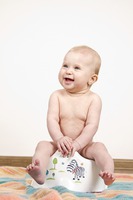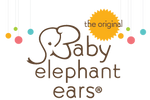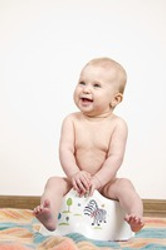The Potty Training Basics
9th Jul 2015
 Potty training is one of the hardest things you’ll have to
teach your child so far. It can be messy, there might be tears, but all kids
eventually get through it. The trick is to make it fun, be loving, and stay
consistent. Here is some basic information about potty training.
Potty training is one of the hardest things you’ll have to
teach your child so far. It can be messy, there might be tears, but all kids
eventually get through it. The trick is to make it fun, be loving, and stay
consistent. Here is some basic information about potty training.
When do I start potty training?
Most families (and I say “families” because it’s a family process) start potty training between 18 and 24 months. You try earlier, but most children don’t have the bowel and bladder control before then. They also lack the cognitive skills to move through a multi-step process (pants off, underpants down, sit on toilet, etc.).
Some kids are ready sooner than the 18-24 months window, others take more time. Don’t feel pressured if your child doesn’t seem to get it right away.
How do I know my child is ready for potty training?
Here are some simple milestones your child should reach before you start potty training.
- He/she can pull down his/her pants without much delay.
- He/she can stay dry for two hours at a time.
- He/she wakes up dry occasionally.
- He/she can sit still for 2-5 minutes.
- He/she understands enough language to use words like “pee” or “poop.”
- He/she shows interest in your bathroom habits (curious about what you’re doing).
- He/she understands basic instructions (“go into the bathroom,” “pull down your pants.”)
Do boys and girls potty train differently?
For obvious reasons, potty training is slightly different for boys and girls. You’ll want to use the most effective techniques.
First, you’ll want your child to pick out a potty seat so they feel some ownership in the process. Boys and girl seats are often decorated differently. Second, you’ll want a person of the same sex involved in the process somewhere to offer specialized tip and just for someone for your child to relate to (by this age, children begin to fall into gender roles).
How do I start potty training?
There are a lot of theories about how to potty train your child. Most are very similar. Before you dive in, start by introducing your child to bathroom basics, like wiping, flushing, washing hands, etc. Show your child how toilets work and how everyone uses them. A potty training book might help introduce them to the process.
You’ll also want some potty training essentials , like a special child-sized potty which isn’t intimidating if you feel your child is afraid of the toilet. Some parents find it helpful to put the little potty in a familiar room first to alleviate any fears.
Most methods consist of tossing out the diapers and prompting your child every fifteen minutes to go to the bathroom. When they go in the potty, praise them heavily. Some children benefit from a reward system, whether it involves using stickers, small chocolates, or even just a special song.
Written by Alicia Overby - Founder & President of Baby Elephant Ears
Alicia is wife, mother, and creator of Baby Elephant Ears. Baby Elephant Ears was created out of parental concern, not financial desire. In 2005, when their second child was an infant, he cried all the time and just couldn't seem to get comfortable.
After seeking advice and suggestion from the medical community and alternative medicine, they eventually ended up in the chiropractors office where their baby was successfully treated for asubluxation, discomfort most likely the result of the strain during labor, which was now being exacerbated by the normal lack of infant neck strength. Only proper neck, head, and back alignment would offer him relief. When they couldn't find a product to give their baby the necessary support, Alicia took matters into her own hands and crafted her own infant support pillow. The first Baby Elephant Ears was born!
For more information, visit www.babyelephantears.com.
Interested in writing a guest blog for Baby Elephant Ears? Send your topic idea to pr@babyelephantears.com.
All data and information provided on this site is for informational purposes only. Baby Elephant Ears makes no representations as to accuracy, completeness, current-ness, suitability, or validity of any information on this site and will not be liable for any errors, omissions, or delays in this information, or any losses, injuries, or damages arising from its display or use. All information is provided on an as-is basis.


